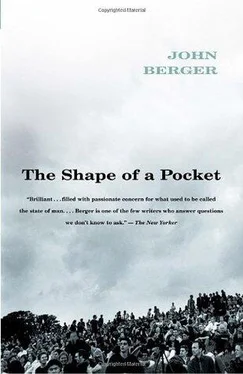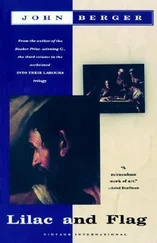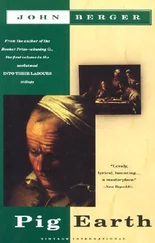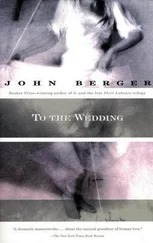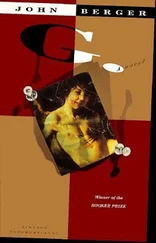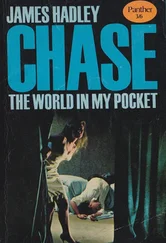When the old recluse lay in his bed in the morning, the light of the day was there before he opened his eyes, allocating shadows and brightness in the room and in the street outside. Every morning the tide of the visible carried him a little way towards the present before he opened his eyes to look at anything!
Later in his studio he tried, through the act of painting, to refind and indicate this tide. Morandi, in his solitude, was in love, not with appearances, but with the project of appearances. And he was, incidentally, the stealthiest painter ever.
16 Pull the Other Leg, It’s Got Bells On It
The church of St Eustace, according to the guide books, is the most beautiful church in Paris after La Notre-Dame. It was built in the sixteenth century beside Les Halles, the fruit and vegetable market of the city since the Middle Ages. Visiting the church today you find in one of its chapels something between a sculpture, a fresco and a high-relief. Three metres long, three metres high, and vividly coloured. It has as tide: Departure of Fruit and Vegetables from the Heart of Paris. It is signed Raymond Mason and is dated 1969, which was the year when Les Halles was closed and the legendary Paris market removed to a city suburb.
The Departure is awkward in many senses of the word, and one doesn’t know how to place it. Is it a theatrical tableau for kids? A kind of Nativity crèche? Is it Fine Art? What is it doing in a church?
There is something coarse about it. The figures have been modelled with a hand that was all thumbs. (Or so one might think at first.) The colours are primitive: the lettuces are lettuce green, the tomatoes slapstick red, the carrots carroty. The scene depicted is at night, a little before dawn, the time when the market opened, and so in the lamplight the figures have pallid faces and crumpled clothes. Banal. Everyday. Every night. Yet if you stay watching this work, its company grows on you and becomes immense, until it fills the entire church.
Why do original works of art often strike us, at first, as being coarse, awkward and difficult to place?
Raymond Mason has sculptures on permanent display in the Paris Tuileries Gardens (apart from St Eustace), in New York, in Montreal, in Vezelay. In 1991 the Queen of England unveiled Forward, a Monument for Birmingham. Yet his work has never been fashionable and now never will be.
In the 1930s there was a boy who, because he was asthmatic, often didn’t go to school. His father was a taxi driver in Birmingham which at that time was still the most important industrial city in Britain. Breathing in his asthma-powder, Raymond sits by the window of the red-brick terraced house, and watches people pass and repass and talk in the street outside. This was the very beginning.
The sixteenth-century peasants of Flemish villages still live in Brueghel’s paintings. Raymond Mason’s art embodies lives from the skilled industrial proletariat of the twentieth century: the lives of the men and women he observed when a boy. It took him thirty years or more to acquire in Paris, where he has lived since 1946, the mastery necessary to do them justice in sculpture. And now they too live — however unfashionably for the moment — in three masterpieces: Departure of Fruit and Vegetables, A Tragedy in the North — inspired by a mining disaster in Liévin — and The Grape Pickers , now installed at Vezelay.
To be faithful as a sculptor to the proletariat is not as simple as it may sound, and not as simple as certain idiots and bigots once insisted. First, observation and love are necessary. Oddly, love is the best guarantee against idealisation. Then observation and observation, drawing upon drawing. One has to become familiar with every physical characteristic — the way bodies develop, the different way clothes are worn, the whole vocabulary of gestures. (Some of this can now be seen in the seventy-three-year-old artist’s own face.)
In 1963 Mason made a plaster bas-relief, life-size, of a man’s back and shoulders. (The same back appears much later in The Grape Pickers.) Unidealised, it is physically heroic; not a slave’s back for it shows pride, nor an athlete’s for it is too worn. Perhaps it is Sisyphus’ back, stripped to the waist for its endurance. Or, yesterday, the back of Heavy Industry.
Ten years earlier, in 1953, Mason had made a bronze relief of a tram with its morning passengers in Barcelona. I still remember the impression this work made on me when I first saw it. Here were workers — men and women — and here was everyday street sensuality being observed, modelled and cast in bronze by an unknown artist who obviously thought of himself as a direct descendant of Donatello and Ghiberti! The insolence of it! Yet behind the admirable insolence there was also a contradiction, a problem.
The industrial proletariat lived without the Aesthetic Principle. Never for a moment did they believe in, or act upon, the idea that virtue — or any other quality — might be deduced from appearances. They didn’t believe that the good looked good. For the most part they weren’t ascetic or puritan; they treated appetite and exuberance as a natural part of life, but not Beauty.
Beauty they saw as a trick, a ruse, a cosmetic lie. A term that expresses something of this defiance is the compliment of calling somebody ‘a rough diamond’; i.e., a gem that looks like a piece of slag! The Beauty they discovered for themselves was an invisible one closely connected with endurance and companionship.
In any proper representation of the proletariat therefore this suspicion of Beauty ought to be taken account of; otherwise they risk, once represented, to be no more than pawns in somebody else’s aesthetic or political game. This was a question Mason wrestled with until he was nearly fifty. How not to fall into the trap of Beauty?
In 1969 he decided to stop casting his life-size plaster sculptures in bronze and to cast them, instead, in epoxy resin. This would allow him to paint them in acrylic. And this is what he did. He began painting his monuments in the derisory colours of proletarian life: the colours of wool shops, knitting needles, tartan caps, bicycle saddles, Wool-worth toys, jam tarts, tobacco tins, pale faces waiting for the stigmata of lipstick kisses, mittens, permed hair.
When I look at these works I see them speaking of things and of a kind of love that I know nobody will ever find in Matisse or Botticelli or Frank Stella.
Of course in sculpture it’s not colour which carries the work; colours refer to vernacular, lifestyle, certain memories; the work has to stand or fall according to what it does with space. Space for sculptures is what voices are for theatre. It is the space a work creates within and around itself which articulates its strength, its joy or its suffering.
As one might have expected from the son of a Birmingham taxi driver, Raymond Mason finally found a way of creating a sculptural space which plays extraordinarily both with the topographical and with narrative. Stories you hear as you drive your fare through the back streets.
The space of his big sculptural groups consists of flows which run between the figures or the little islands of figures, like currents in a river. Mason talks about ‘the torrent of life’. You peer through the ravine between two bodies, you look over the boulder of a shoulder, or between a pair of legs, or under a raised arm, or around a couple, and each time your gaze is swept away to another form, another life. And these lives add up — as the scenes from a silent Chaplin film add up, except that here, in epoxy resin, everything is present for ever and nothing moves.
His mastery of this created synthetic space allows the onlooker to become simultaneously aware of a crowd who have gathered, of receding streets and red bricks which never end, and of the knotted veins meandering across the back of a working man’s hand. Among other artists probably only Verdi had such an embracing love of the popular.
Читать дальше
